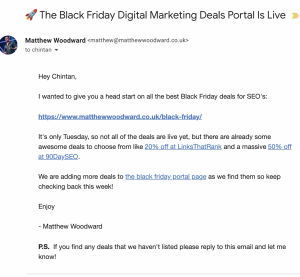— September 22, 2017

The dream of owning a small business can come with a hefty price tag. Where that money comes from is one of the first key challenges of entrepreneurship.
One avenue that could be an answer is microloans. The microlending concept is generally regarded to have taken flight with Muhammad Yunus and Grameen Bank, and it has been lauded as a way to fight poverty in addition to encouraging small businesses. Microloans are relatively small in comparison to what banks provide.
In a story for the U.S. Small Business Administration, Caron Beesley reports that the average cost of a new business is around $ 30,000 — depending on the industry, business model and other factors — as estimated by the Kauffmann Foundation.
“If you determine that your start-up venture is going to cost you somewhere between $ 500 and $ 50,000, and your savings just aren’t enough, you might want to consider a microloan,” she writes. “Why? Many start-ups and new small businesses often find they may not qualify for a traditional small business bank loan. Without a proven track record of 3-5 years under your belt and/or established business credit, many banks simply won’t take the risk.”
The SBA can assist in microloans, as can “community-based, nonprofit microfinance institutions,” Beesley writes. Some microloans can be targeted to people with poor credit, she says, and some are designed for women and veterans.
Here’s a look at how microloans work on the road to starting a small business.
Step by step
How to get started with microloans? A story by financial institution Fundera lays out a four-step plan to prepare for the process.
Collateral: The lender may require collateral or a personal guarantee for microloans, because the funds are “routinely serviced to businesses with little credit history, and to business owners with no credit or poor credit.”
Credit report: Good credit is always a significant help with loans, and those interested in microloans should get their credit reports in shape. But the Fundera story notes that the emphasis on credit is greater in other kinds of loans than with microloans. “Because of the smaller principal amount, microloans are seen as a great ‘starter’ loan for brand new businesses with no credit history, or even for businesses bouncing back from bankruptcy.”
Business plan: Prospective business owners will need to prepare a detailed and well-thought-out business plan for a microloan, just as they would for a bank loan. “Microfinance lenders will look to your business plan to determine the strength of your business model, decide whether you are serious about growing your business, and ultimately decide whether you qualify for a microloan,” the Fundera story states.
Personal investment: If an entrepreneur is willing to put some of his or her own money into the business, that could increase the chances of a microloan, according to Fundera. “ … Lenders want to see your earnest effort and intention to invest your own time, effort, and money into your business venture. … When you apply for microloans, certain intermediary lenders may request your recent income tax returns, then compare that information to your company balance sheet to see what proportion of your income you have invested into your business.”
SBA assistance
Microloans through the SBA go up to $ 50,000, and average about $ 13,000. The money doesn’t come directly from the administration, but rather through “certain intermediary lenders,” described as “nonprofit community-based organizations with experience in lending, management and technical assistance,” according to the SBA’s Katie Murray. (Here’s a list of intermediary lenders.)
If a prospective entrepreneur is looking to buy some land for a business or reduce debt, he or she will need to move away from microloans. Those are not eligible uses for the loans, Murray writes. But microloans can be used for inventory, equipment, machinery, furniture and working capital.
The terms of repayment can vary, depending on the amount, how the funds will be used, and any requirements by the lender, Murray says. The length of the repayment period is six years or less.
Targeted microloans
Some microlenders have specific targets in mind. In a story for The Balance, Lahle Wolfe examines microloans for women and minorities. These options include:
- Kiva: The international nonprofit “aims to reduce poverty by connecting people through microlending,” Wolfe writes. “The loans are crowdfunded, with backers contributing donations as small as $ 25 to borrowers.”
- Grameen America: Microlending pioneer Muhammad Yunus won the Nobel Peace Prize for his efforts with Grameen Bank in Bangladesh. “As part of Grameen America, women in poverty receive financial education and guidance with the goal of establishing credit,” Wolfe writes. “Women in the Grameen America program can receive $ 1,500 to start a business.”
- ACCION USA: Wolfe writes that the private nonprofit offers microloans “to low and moderate-income entrepreneurs, including women and minorities who are otherwise unable to access bank credit for their small businesses.”
- Elizabeth Street Capital: The partnership of the Tory Burch Foundation and Bank of America “provides access to affordable loans to female entrepreneurs and other entrepreneurs in underserved communities,” Wolfe writes.
Risk vs. reward
As with any financial endeavor, borrowing money in hopes of business success comes with risks, no matter the source of the funding. Small business lender Kabbage breaks down some of these elements for microloans. First, some risks:
Interest rate: As mentioned, the rate will be higher than a bank loan. “If your interest rate is 18 percent, it may not be in your best interest to take the funds — particularly if there is any risk that your business will not make enough to cover the principal and the interest,” the story states. “Non-payment on a microloan can hurt your credit just as much as defaulting on a more traditional loan.”
Time frame: There may be a fairly lengthy process to undergo with microloans, so it’s not a quick fix. “There are many businesses applying, which can cause delays,” according to Kabbage. “And, you can expect to have to spend additional time taking either online or in-person classes on a variety of business-related topics before you get your cash.”
And some rewards:
Beyond the numbers: A bank won’t base a loan on the borrower’s enthusiasm. Microlenders, on the other hand, “are much more interested in a business owner’s passion and commitment to their business,” the Kabbage story states. “… If you have a great idea and a well fleshed out business plan, you’re far more likely to get funding from a microlender than from the bank down the street.”
Credit history: What may be among the primary concerns for a bank isn’t necessarily as crucial for microlenders, who “weigh their decision much less on an applicant’s credit history,” according to Kabbage. “If you’ve been turned down by banks or other lenders, you still may qualify for a microloan if you can effectively demonstrate need and that your business truly has potential.”
Business & Finance Articles on Business 2 Community
(76)





